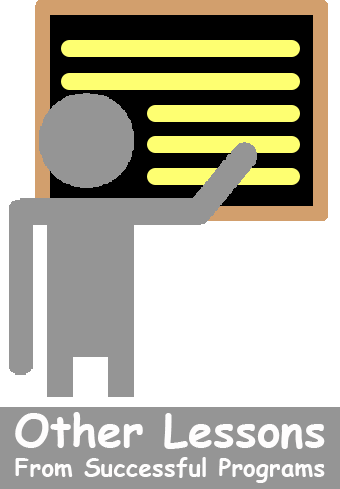Other Regional Collaboratives
The new focus on early identification spurred the development of new collaborations in the region. I served as Scientific Consultant to the Montreal Regional Health Board for their autism initiatives across a network of community-based rehabilitation centers and university-affiliated hospitals.
I also helped to launch a new collaborative network at the Universite du Quebec a Montreal, that resulted in the publication of a white paper to guide the development of services in the region. s a result, I provided consultation to a broad range of programs across the region and the province, from private schools to regional rehabilitation centers to programs for aboriginal groups in remote regions.
As a adjunct faculty of the Department of Education at McGill University during this same period, I co-supervised several master's and doctoral students with Dr. Jake Burack (Klaiman, Burack, & Doehring, 1998). I also published and presented other work related to autism (Doehring, 1997; Doehring, Burack, & Benaroya, 1996; Doehring, 2001).
 Collaborative networks multiply the reach and impact of new service and training initiatives when they carefully draw on the strengths of each partner
Collaborative networks multiply the reach and impact of new service and training initiatives when they carefully draw on the strengths of each partner
The opportunity to advise the Montreal Regional Health Board created other opportunities to generalize new assessment and intervention protocols to other settings, significantly increasing the number of people with ASD who might benefit. I soon learned that this generalization only occurred when these protocols were adapted in the light of a specific program's role, the population they served, and the resources available to them.
Each adaptation required a careful assessment of the potential impact of the change on the outcomes expected, and re-adjustments as needed. And each of these adjustments potentially created new opportunities for partners to adapt more complementary roles, to enhance the overall quality of services provided to children. For example, I could not expect a rehabilitation center to develop the expertise to undertake initial diagnostic evaluations, but they were perfectly to intervention and recommend re-evaluations if this response raised new questions about the diagnosis. This created a new role for rehabilitation centers in monitoring overall progress.
I also learned that these collaborative networks soon stalled if they were not carefully cultivated. Partners rightly close their doors to the erstwhile expert, who may be perceived as trying to usurp their own expertise or resources, who may try to impose changes that are simply not a good fit, and who may be unable to make the kinds of careful readjustments described above. These truly are relationships between organizations that evolve over time based on the needs, qualities, and goals of each partner agency.
X
My Presentations and Publications
 (2001). An overview of the early detection, assessment, and treatment of autism in young children. CNRIS, 4 (1) 11-14.
(2001). An overview of the early detection, assessment, and treatment of autism in young children. CNRIS, 4 (1) 11-14.
Doehring, Peter (2001). Programmes d'intervention comportementale pour enfants autistes: quels sont les meilleurs? PRISME, 34, 80-91.
![]()
Klaiman, With Cheryl Klaiman and Jake Burack. (1998). Attention to novelty in young children with Autism: An unacknowledged skill? American Psychological Association, San Francisco, CA.
 (1997). Le developpement de l’attention conjointe en autism. Invited talk. ARAPI. Savoie, France.
(1997). Le developpement de l’attention conjointe en autism. Invited talk. ARAPI. Savoie, France.



